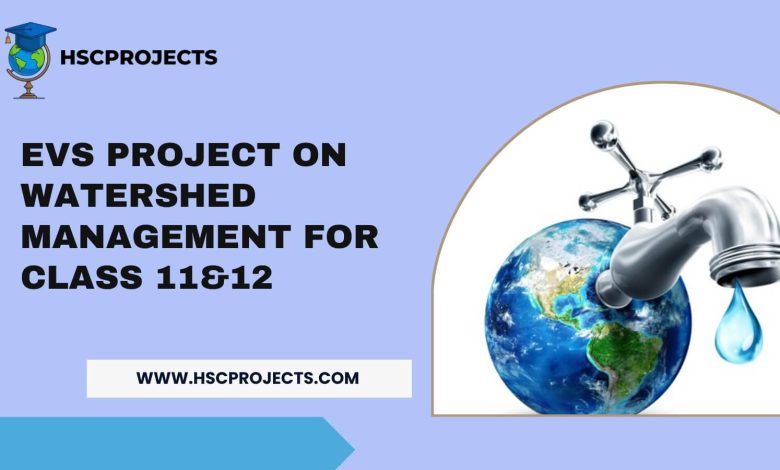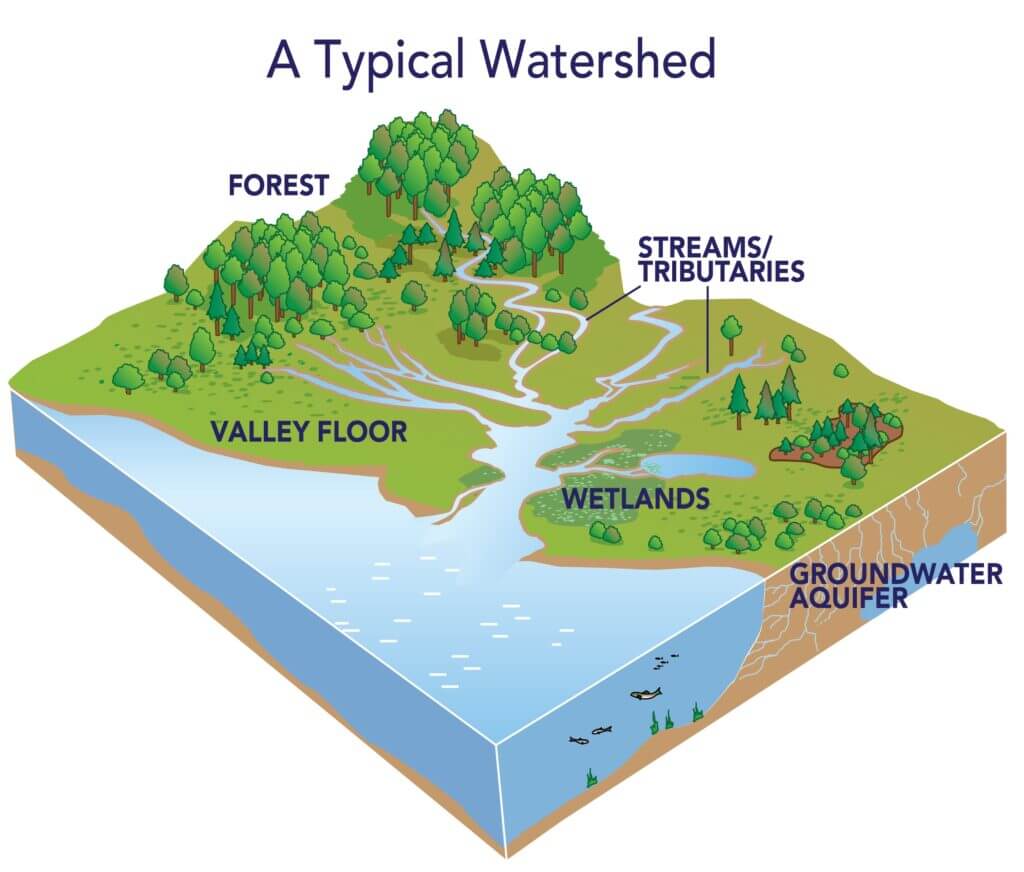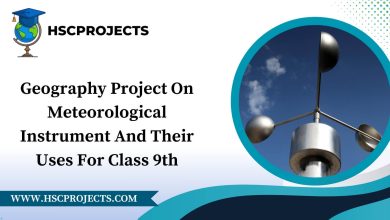
Evs Project On Watershed Management For Class 11&12
Acknowledgments
Embarking on the exploration of watersheds and their intricate dynamics has been a collaborative endeavor, enriched by the support and contributions of numerous individuals, organizations, and experts. As we bring this project to fruition, we extend our heartfelt gratitude to those who have played a pivotal role in shaping and enriching our understanding.
First and foremost, we express our gratitude to [Name], whose expertise and guidance provided invaluable insights into the nuances of watershed management. Their willingness to share knowledge and experiences has been a cornerstone in shaping the depth and accuracy of our project.
We extend our appreciation to [Name of Organization/Institution] for their support in accessing crucial resources, data, and research materials. Their commitment to the advancement of environmental knowledge has been instrumental in elevating the quality of our project.
Our sincere thanks also go to the contributors of academic articles, books, and websites cited in our bibliography. Their dedicated work forms the foundation upon which this project stands, enriching our exploration and providing a diverse range of perspectives.
Additionally, we acknowledge the unwavering support of [Name], [Title], and [Name], who provided assistance in various aspects of the project, from data analysis to editorial insights. Their collaborative spirit has been a driving force behind the project’s comprehensive and cohesive presentation.
Lastly, we express gratitude to the communities and individuals who are at the forefront of watershed conservation efforts. Their commitment to sustainable practices and environmental stewardship serves as an inspiration and a reminder of the real-world impact our collective actions can achieve.
In acknowledging these contributions, we recognize that this project stands as a collective effort—a testament to the collaborative spirit that fuels progress in the realm of environmental understanding and conservation.
Introduction
In the quiet embrace of nature lies a hidden symphony—a delicate interplay of land and water that orchestrates the fate of entire ecosystems. This symphony unfolds within the bounds of watersheds, those silent guardians of the hydrological cycle. As our planet grapples with the challenges of climate change and resource depletion, the significance of effective watershed management becomes increasingly profound.
This project embarks on a journey through the verdant landscapes of watersheds, seeking to unveil their secrets, understand their challenges, and chart a course toward sustainable solutions. From the very definition of these geographical entities to the intricate dance of biodiversity within their borders, every facet of watershed management is explored with the lens of conservation and resilience.
Beyond the academic exploration, this project carries a deeper purpose—a call to action. As we navigate the findings and lessons learned from successful watershed management projects, the narrative extends beyond the pages and into the communities that depend on these vital ecosystems. It beckons individuals to become stewards of their local watersheds, advocates for sustainable practices, and champions for policies that safeguard the lifelines of our environment.
This is not just a project; it is an exploration of our shared responsibility to protect and preserve the intricate balance that sustains life on Earth. The journey begins with understanding, extends through awareness, and culminates in a collective commitment to ensure that the harmonious symphony of watersheds endures for generations to come.
Watershed Overview
- Definition and Characteristics: Picture a watershed as nature’s canvas, defined not merely by its borders but by the interplay of land and water. Its contours, dimensions, and geological features orchestrate a symphony of environmental processes, shaping the destiny of all that resides within.
- Types of Watersheds: Diverse as the landscapes they carve, watersheds take on various personas. From the sprawling expanses of drainage basins to the intricate networks of river basins, each reflects a unique blend of land use and management practices. Urban and rural watersheds, distinct in character, tell tales of human impact on these vital ecosystems.

Importance of Watershed Management
- Water Conservation: In the dance of droplets and currents, watershed management emerges as the choreographer. Its meticulous planning ensures the sustainable rhythm of water usage, maintaining a delicate ecological equilibrium.
- Biodiversity Conservation: Within the sheltering arms of a healthy watershed, biodiversity thrives. Yet, the shadow of degradation looms large, threatening the intricate balance between flora and fauna, urging us to be stewards of this vibrant diversity.
- Economic Significance: Watershed management, a silent contributor to economic prosperity, weaves its influence through agriculture, fisheries, and tourism. Sustainability becomes not just an environmental ethos but a key to unlocking enduring economic benefits.

Challenges in Watershed Management
- Deforestation: As the sentinel trees fall, the watershed weeps. Deforestation disrupts the harmonious dialogue between land and water, birthing a discordant narrative of soil erosion, diminished water quality, and the ominous specter of floods.
- Urbanization: The urban sprawl, relentless in its expansion, reshapes landscapes and taints watersheds. Impervious surfaces multiply, and pollutants infiltrate, challenging the health of these vital ecosystems.
- Agricultural Practices: In the pursuit of abundance, certain agricultural practices sow seeds of discord within watersheds. Pesticides and fertilizers, wielded without restraint, seep into the waters, casting a shadow over aquatic ecosystems.
Case Studies
Successful Watershed Management Projects: On this global stage, success stories emerge—be it the rejuvenation of the Chesapeake Bay Watershed in the U.S. or the transformative Integrated Watershed Management Program in India. These narratives of triumph echo strategies that beckon us to learn from the past and shape a sustainable future.
Solutions and Recommendations
- Reforestation: In the symphony of solutions, the call for reforestation resonates profoundly. Planting the seeds of resilience, it shields against soil erosion, cradles water in its roots, and nurtures the overall well-being of watersheds.
- Community Involvement: Amidst the grandeur of landscapes, the heartbeat of change is found in communities. Through collective efforts—cleanup campaigns, educational endeavors—local initiatives become the catalysts for watershed guardians
Conclusion
In the tapestry of watersheds, our exploration has unveiled not just a geographical entity but a profound testament to the interconnectedness of our environment. As we draw the curtain on this project, the threads woven through the exploration of watershed management converge into a resounding conclusion: the imperative of safeguarding our water resources.
Summarizing Key Findings: From the sprawling landscapes defined by topographical boundaries to the challenges that threaten their vitality, our journey has illuminated the critical role of watershed management. The findings echo the importance of this delicate balance in ensuring sustainable water resources—a symphony where every note, every detail, resonates with the well-being of our ecosystems.
Call to Action: Yet, this project transcends the realm of scholarly pursuit; it extends a call to action. The lessons learned from successful watershed management projects beckon us to be architects of change in our communities. It urges each individual to become a custodian of their local watershed, advocating for policies that prioritize conservation and championing sustainable practices.
A Shared Responsibility: As stewards of our planet, the responsibility is not merely academic or theoretical; it is a shared commitment to the health and resilience of our environment. The echoes of this exploration reverberate in the collective consciousness, urging us to be mindful architects of a sustainable future.
The Symphony Continues: The symphony of watersheds, with its gentle currents and harmonious rhythms, must endure. It is a reminder that our actions today shape the narrative of tomorrow. As we conclude this project, let it be an invitation—to communities, policymakers, and individuals alike—to join the ongoing symphony of watershed conservation. In the hands of each proactive advocate, in the ripple of every sustainable practice, the melody of a resilient, water-secure future continues to play.
Bibliography
- Gleick, P. H. (1993). Water in Crisis: Paths to Sustainable Water Use. Ecological Applications, 3(3), 571–579.
- Chesapeake Bay Program. (2022). Chesapeake Bay Watershed. https://www.chesapeakebay.net/
- Ministry of Environment, Forest and Climate Change, Government of India. (2022). Integrated Waters
- Doyle, M. W., & Stanley, E. H. (2003). How Damming and Leveeing Rivers Affects Water Quality and Health. Issues in Ecology, 10, 1–15.
- U.S. Environmental Protection Agency. (2022). Watershed Academy: A Distance Learning Program.
- Prasad, R. (Ed.). (2017). Watershed Management: Balancing Sustainability and Environmental Change. CRC Press.
- United Nations. (2015). Sustainable Development Goal 6: Clean Water and Sanitation.
- The World Bank. (2022). Integrated Watershed Management.
- Sharma, A. (2019). Community-Based Watershed Management: Lessons from the Himalayan Foothills. Water, 11(10), 2045.
- Environmental Protection Agency, Ireland. (2022). Waters and Communities Office.
Certificate of Completion
[Student’s Name][Class/Grade Level]This is to certify that I, [Student’s Name], a [Class/Grade Level] student, have successfully completed the “EVS Project on WATERSHED MANAGEMENT for class 11&12.” The project explores the fundamental principles and key aspects of the chosen topic, providing a comprehensive understanding of its significance and implications.
In this project, I delved into in-depth research and analysis, investigating various facets and relevant theories related to the chosen topic. I demonstrated dedication, diligence, and a high level of sincerity throughout the project’s completion.
Key Achievements:
Thoroughly researched and analyzed Project on EVS Project on WATERSHED MANAGEMENT for class 11&12
Examined the historical background and evolution of the subject matter.
Explored the contributions of notable figures in the field.
Investigated the key theories and principles associated with the topic.
Discussed practical applications and real-world implications.
Considered critical viewpoints and alternative theories, fostering a well-rounded understanding.
This project has significantly enhanced my knowledge and critical thinking skills in the chosen field of study. It reflects my commitment to academic excellence and the pursuit of knowledge.
Date: [Date of Completion]Signature: [Your Signature] [School/Institution Name][Teacher’s/Examiner’s Name and Signature]
In order to download the PDF, You must follow on Youtube. Once done, Click on Submit
Follow On YoutubeSubscribed? Click on Confirm
Download Evs Project On Watershed Management For Class 11&12 PDF






